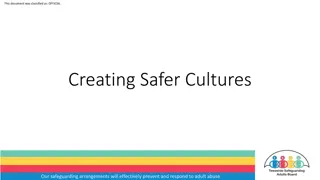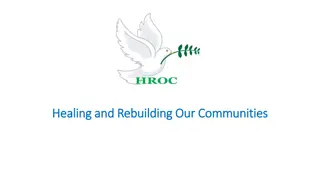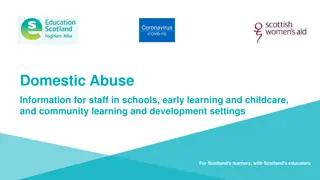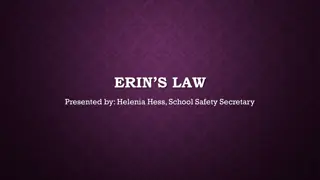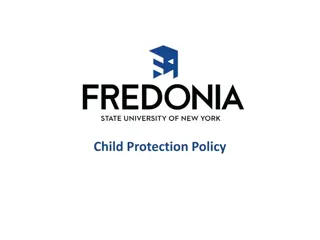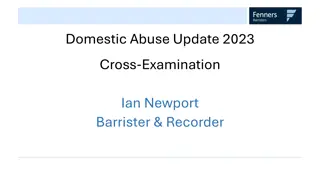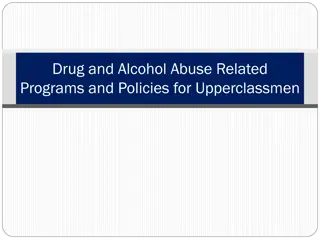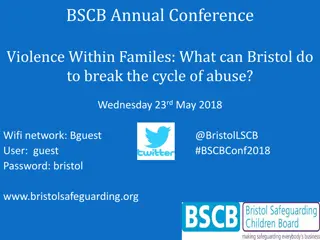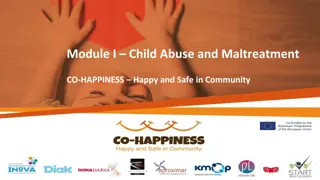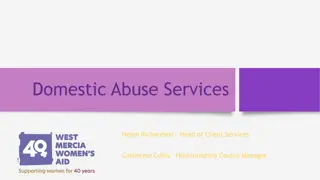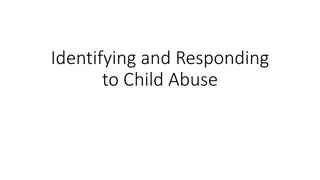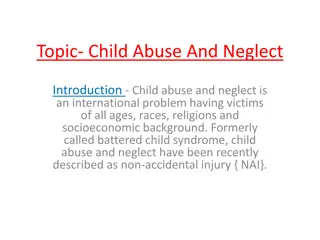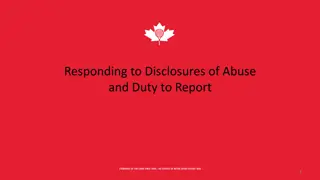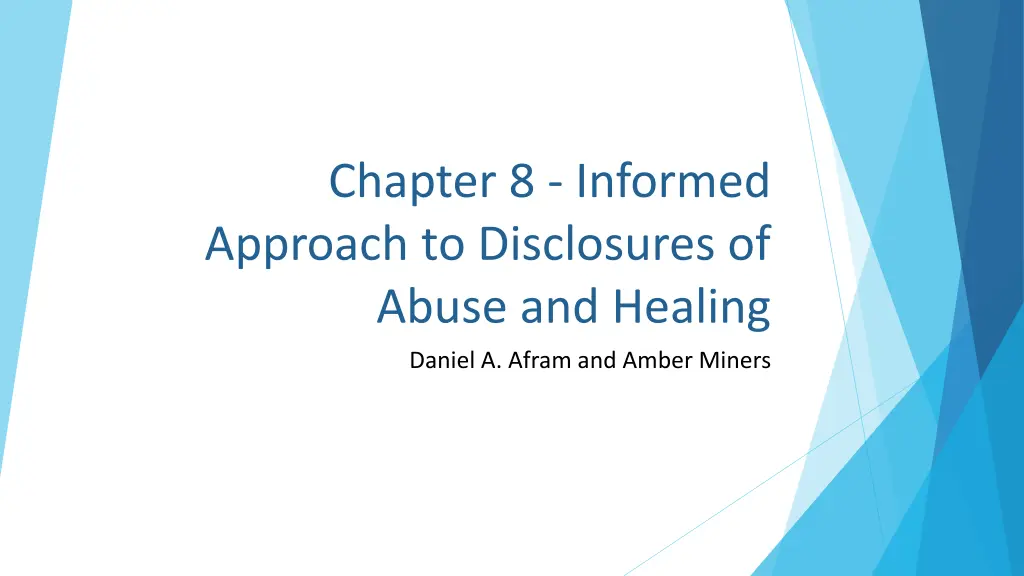
Informed Approach to Disclosures of Abuse and Healing in Nunavut
Explore the challenges faced by social workers in Nunavut through a case study, delving into historical and social complexities of Inuit populations. Learn about the Child Advocacy Centre model, Inuit Qaujimajatuqangit principles, and practical solutions for community care and healing.
Download Presentation

Please find below an Image/Link to download the presentation.
The content on the website is provided AS IS for your information and personal use only. It may not be sold, licensed, or shared on other websites without obtaining consent from the author. If you encounter any issues during the download, it is possible that the publisher has removed the file from their server.
You are allowed to download the files provided on this website for personal or commercial use, subject to the condition that they are used lawfully. All files are the property of their respective owners.
The content on the website is provided AS IS for your information and personal use only. It may not be sold, licensed, or shared on other websites without obtaining consent from the author.
E N D
Presentation Transcript
Chapter 8 - Informed Approach to Disclosures of Abuse and Healing Daniel A. Afram and Amber Miners
Introduction This chapter will discuss: Approaches to the challenges of social work in Nunavut, through the introduction of a case study highlighting common realities across Nunavut. The historical and social complexities of Inuit populations to consider any approach or intervention in the provision of service. The Child Advocacy Centre (CAC) model, which works within the Inuit Qaujimajatuqangit (IQ) principles.
Learning Objectives This chapter will focus on the following elements that will serve to inform the learning objectives: Historical context of Inuit in the Arctic Inuit societal values Community response to care Child Advocacy Centres Multidisciplinary teams Ethical considerations Barriers and challenges
Practice Area and/or the Population of Focus Many Inuit reside in small communities in four northern regions of Canada (Inuit Nunangat) including: Inuvialuit (NWT); Nunatsiavut (Newfoundland and Labrador); Nunavik (Quebec); and Nunavut. Nunavut has 25 fly-in communities that cover 20 percent of Canada s landmass and three time zones. Nunavut is separated into three regions (Kitikmeot, Kivaliq and Qikiqtaaluk). The focus of the chapter will primarily be Nunavummiut (Inuit residing in Nunavut) residing in the Qikiqtaaluq region of Nunavut consisting of 13 fly-in communities.
Overview of Policy and Service Delivery Issues The incorporation of Inuit Qaujimajatuqangit (IQ) values into every aspect of modern-day practices within Nunavut exists to maintain and enrich the cultural heritage of Inuit (Government of Nunavut, 2007): Inuuqatigiitsiarniq: Respecting others, relationships, and caring for people Tunnaganariq: Fostering good spirits by being open, welcoming, and inclusive Pijitsirniq: Serving and providing for family and/or community Aajiiqatigiinniq: Decision making through discussion and consensus
Overview of Policy and Service Delivery Issues Pilimmaksarniq/Pijariuqsarniq: Development of skills through observation, mentoring, practice, and effort Piliriqatigiinniq/Ikajuqtigiinniq: Working together for a common cause Qanuqtuurniq: Being innovative and resourceful (i.e. in solving problems) Avatittinnik Kamatsiarniq: Respect and care for the land, animals and the environment The incorporation of IQ values into service mandates and programming is helping shift the way systems respond in supporting individuals and families within Nunavut.
Overview of Policy and Service Delivery Issues In many Indigenous communities, such as Nunavut, the presence and impact of intergenerational trauma is commonplace. The issues that arise in northern social work practice include practicing beyond our competence, dual relationships, having too much access to information, and limited supervision. The lack of resources or experts within communities can result in many social workers engaging in work that is normally outside their expertise, or a practicing social worker might align oneself with the practice of other professionals within the community (Schmidt, 2009).
3 Levels of Social Work Practice Micro At the micro level, it is important to recognize some of the access barriers that individuals and families have to services. Being a social worker within a remote community such as Iqaluit is more than simply providing service and linking people to services. Social workers need to be mindful of the generations of harm and the perpetual continuation of this within systems. More importantly the level of power and trust at the micro level needs to be respected and recognized when navigating larger systems with families.
3 Levels of Social Work Practice Mezzo As social workers, our work with clients at the mezzo practice level typically involves participation in working groups and advocacy towards achieving equitable services within the community. The first Child Advocacy Centre (CAC) in Nunavut is an example of the gradual grassroots movements to address community issues at the mezzo level.
3 Levels of Social Work Practice Macro A couple of community leaders focused on changes at the macro practice level. Changes have occurred at the political level by having a Memorandum of Understanding created within all the departments in Nunavut who are responsible for the well- being of children. Without the advocacy of social workers, allied professionals and community members doing individual and family interventions and shinning a light to the important and prevalent issue of child abuse, there would have been no working groups, political will and data collection to support the need of a transformative approach to addressing child abuse in Nunavut.
Conclusion The incorporation of Inuit Qaujimajatuqangit (IQ) values in policies and organizations has proven beneficial in the lives of Inuit. As professionals working in remote communities such as Nunavut, it is our duty to be informed about the histories and oppressions experienced by our clients. Based on the uniqueness of the remote community, services available to the children and their families are fostered and enriched from a cultural perspective by creating allies within the community along with fostering service partnerships. Increased connection and support are key to increased family empowerment, healing, safety, sense of self and resilience, and reduced generational transmission of trauma response.
References Government of Nunavut. (2007). Inuit Qaujimajatuqangit Education Framework for Nunavut Curriculum. https://www.gov.nu.ca/information/inuit-societal-values Schmidt, G. (2009). What is northern social work? In R. Delaney & K. Brownlee (Eds.), Northern and rural social work practice: A Canadian perspective (pp. 1-17). Lakehead University Centre for Northern Studies.



